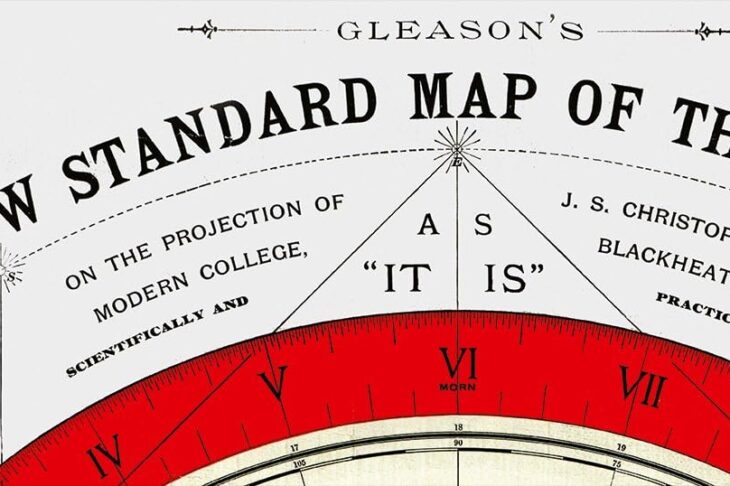
Flat Earth Evidence: A Critical Examination of the Claims
The notion that the Earth is flat, rather than a globe, has persisted for centuries, fueled by a combination of misinformation, misinterpretations of scientific data, and a general distrust of established institutions.
While the overwhelming scientific consensus, supported by centuries of empirical evidence, affirms the Earth’s spherical shape, flat-Earth proponents continue to assert their claims, often citing a collection of observations and experiments as “proof” of their beliefs.
This article aims to critically examine the most commonly cited pieces of “flat Earth evidence,” dissecting their underlying logic and exposing the flaws in their reasoning. By understanding the true nature of these claims, we can better equip ourselves to engage in informed discussions and counter the spread of misinformation.
1. The Bedford Level Experiment
One of the most frequently referenced pieces of flat Earth evidence is the Bedford Level experiment, conducted in 1838 by Samuel Rowbotham.
This experiment involved observing a stretch of the Old Bedford River in England, with the claim that the curvature of the Earth could not be detected over this distance. However, this experiment was fundamentally flawed, as it failed to account for atmospheric refraction, which can significantly distort long-distance observations. When properly accounting for refraction, the expected curvature of the Earth aligns perfectly with the observations made during the Bedford Level experiment.
2. Lack of Visible Curvature
Flat-Earthers often argue that the Earth appears flat to the naked eye, therefore it must be flat. This argument fails to consider the sheer size of the Earth. The curvature is indeed subtle and difficult to perceive from ground level. To truly witness the Earth’s curvature, one needs to ascend to high altitudes, such as those achieved by airplanes or high-altitude balloons. Numerous photographs and videos taken from such heights clearly demonstrate the Earth’s curvature.
3. Vanishing Ships at the Horizon
The phenomenon of ships disappearing hull first over the horizon is often cited as evidence against a spherical Earth. However, this is precisely what one would expect on a curved surface. As a ship sails away from an observer, it gradually descends below the horizon, with the hull disappearing first, followed by the mast. This effect is easily explained by the Earth’s curvature and is impossible to reconcile with a flat Earth model.
4. The Absence of Circumnavigation in a Straight Line
Flat-Earthers argue that if the Earth were a globe, it would be possible to circumnavigate it in a straight line. However, this claim misunderstands the concept of a “straight line” on a curved surface. On a sphere, the shortest distance between two points is a great circle, which appears curved on a flat map projection. Airplanes and ships follow great circle routes, which appear as curved lines on a flat map but are, in fact, the straightest possible paths on the Earth’s surface.
5. Lunar Eclipses
The round shadow cast by the Earth on the Moon during a lunar eclipse is often cited as evidence for a spherical Earth. However, flat-Earthers attempt to explain this phenomenon by claiming that the shadow is cast by a “dome” covering the flat Earth. This explanation is not only ad hoc but also fails to account for the fact that the Earth’s shadow is always circular, regardless of the Earth’s orientation. This is only possible if the Earth is a sphere.
6. The Coriolis Effect
The Coriolis effect, which causes moving objects on the Earth’s surface to deflect to the right in the Northern Hemisphere and to the left in the Southern Hemisphere, is often dismissed by flat-Earthers as a “made-up” phenomenon. However, the Coriolis effect is a real and measurable force that has a significant impact on weather patterns, ocean currents, and even the trajectory of projectiles. It is a direct consequence of the Earth’s rotation and is impossible to explain on a flat Earth model.
7. Conflicting Time Zones
The existence of different time zones across the globe is often cited as evidence against a flat Earth. Flat-Earthers argue that if the Earth were flat, it would be the same time everywhere. However, this argument ignores the fact that the Earth rotates, causing different parts of the Earth to face the Sun at different times. Time zones are a direct consequence of this rotation and are easily explained by a spherical Earth model.
8. The Behavior of Water
Flat-Earthers often claim that water cannot adhere to a spinning globe. However, this claim ignores the fundamental force of gravity, which pulls water towards the center of the Earth, regardless of its shape. The Earth’s gravity is more than strong enough to hold water in place, even on a rapidly rotating sphere.
9. The Lack of a “True” Map
Flat-Earthers argue that there is no “true” map of the Earth, as all maps are distortions of the actual shape of the Earth. However, this is true for any three-dimensional object being represented on a two-dimensional surface.
Map projections are necessary to represent the Earth’s curved surface on a flat map, and each projection has its own inherent distortions. This does not mean that the Earth is not a globe; it simply reflects the challenges of representing a sphere on a flat surface.
10. Personal Observations and Experiences
Finally, flat-Earthers often rely on personal observations and experiences to support their claims. They may argue that they have never seen the curvature of the Earth or that they have conducted experiments that seem to contradict the globe model.
However, personal observations are often limited by perspective and can be easily misinterpreted. Scientific experiments require careful design and execution to account for all variables. Anecdotal evidence and personal experiences cannot replace the rigorous scientific evidence that supports the Earth’s spherical shape.

The “evidence” presented by flat-Earthers is based on a combination of misinformation, misinterpretations of scientific data, and a fundamental misunderstanding of basic physics and mathematics. Each claim can be easily debunked by applying sound scientific principles and considering all relevant factors. The overwhelming scientific consensus, supported by centuries of empirical evidence, affirms the Earth’s spherical shape. It is crucial to rely on credible sources of information and to engage in critical thinking when evaluating claims that contradict established scientific knowledge.
Furthermore, it is important to understand the motivations behind flat-Earth beliefs. While some proponents may genuinely believe in their claims, others may be driven by a distrust of authority or a desire to feel part of a select group with “insider knowledge.” By understanding these motivations, we can better engage in respectful dialogue and potentially help individuals to reconsider their beliefs in light of the overwhelming evidence.
Ultimately, the debate over the shape of the Earth is not a matter of opinion or belief. It is a matter of scientific fact, supported by a vast body of evidence that cannot be reasonably disputed. While it is important to respect differing viewpoints, it is equally important to uphold scientific integrity and to counter the spread of misinformation that can have harmful consequences.

